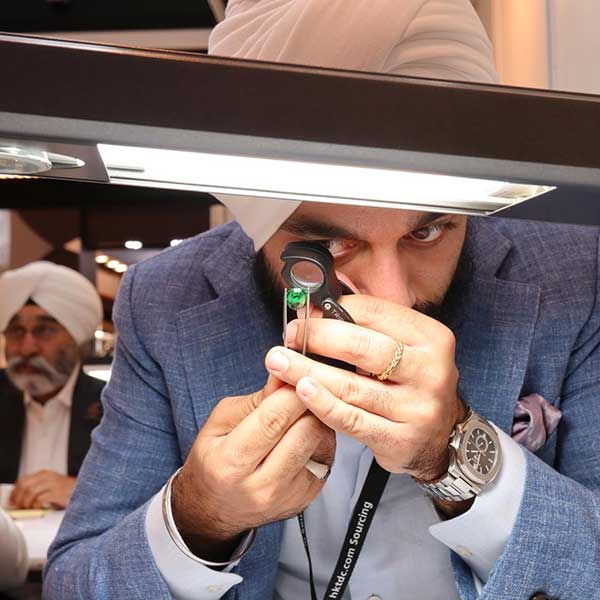
If you love colored stones and you don’t follow Dave Bindra (aka @gemfluencer, pictured above) on Instagram, you’re doing yourself a disservice. The vice president of B & B Fine Gems in Los Angeles is a prolific and talented social media star whose feed is dominated by mesmerizing pictures and videos of his company’s fine, deeply saturated colored stones paired with a seemingly unlimited number of equally colorful sneakers, all jazzed up by a funky soundtrack of hip-hop beats.
JCK recently caught up with Bindra to talk all things color.
“This last month has been wild,” he said. “I was in Vegas, then came back home for a week, and then I was on the road for 16 days, in Dallas, then Denver.” (Dallas was home to this year’s American Gem Society Conclave, while Denver hosted the first HardRock Summit, which included a ballroom dedicated to members of the American Gem Trade Association, B & B among them.)
Below, Bindra recaps the shows, gives us a glimpse of the stones and colors he thinks will trend over the holiday, and tells us why cryptocurrencies scare him but lab-grown gems do not.
How was Vegas?
We exhibited at AGTA, in a ballroom in the Encore. It was really elegant, the ballroom was beautiful, but it was a tough show for most people given the location and the general challenges of doing a trade show during these times.
But we did very well because there’s a lot of demand for fine quality color, and there isn’t a lot of merchandise on the market. It’s the one time where being inventory rich has paid off, in a post-COVID environment. High-end consumers are looking for rare and unusual items. There was an incredible tidal wave of new money created during COVID. And people still aren’t really traveling that much, so that kind of discretionary spending is still going to the luxury sector.
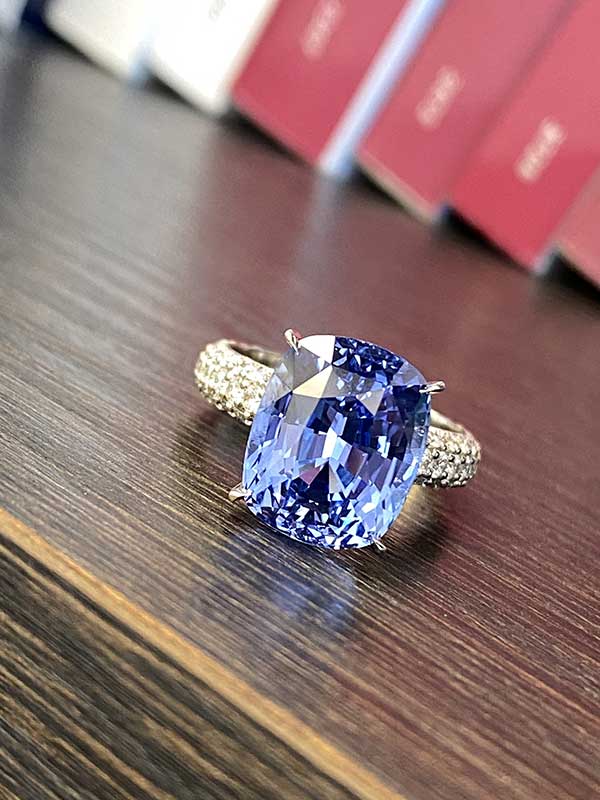
And how was the HardRock Summit in Denver?
Denver was also really interesting. The show was good for us, but I didn’t meet anybody new. But I think it has potential. I would have loved to have seen more designers and retailers.
No consumers could come to our section, so we weren’t expecting that. There was a kind of an uproar about gem dealers exhibiting where the public is, but that’s kind of silly because end users find their way to these shows if they want to, and if you’re a responsible wholesaler, you respect your customers and do your due diligence. A lot of people are just afraid of change, but things are changing.
The potential is there with HardRock because there’s a lot of crossover in the worlds of minerals and colored gemstones, and Denver has this Tucson-esque energy to it. It’s a really relaxed environment. There’s a tremendous opportunity here because if there’s no September show in Hong Kong, Denver has the opportunity to be a major colored gemstone show in the fall—globally, not just in the U.S.
Which stones, colors, and/or varieties do you expect to be hot this holiday?
Sapphires have come back in a really strong way. Classic blue sapphires, purples, pinks. There’s really strong demand for padparadschas, which are hard to find. Pastels have done really well in the last three to four months in most stones but specifically in sapphires.
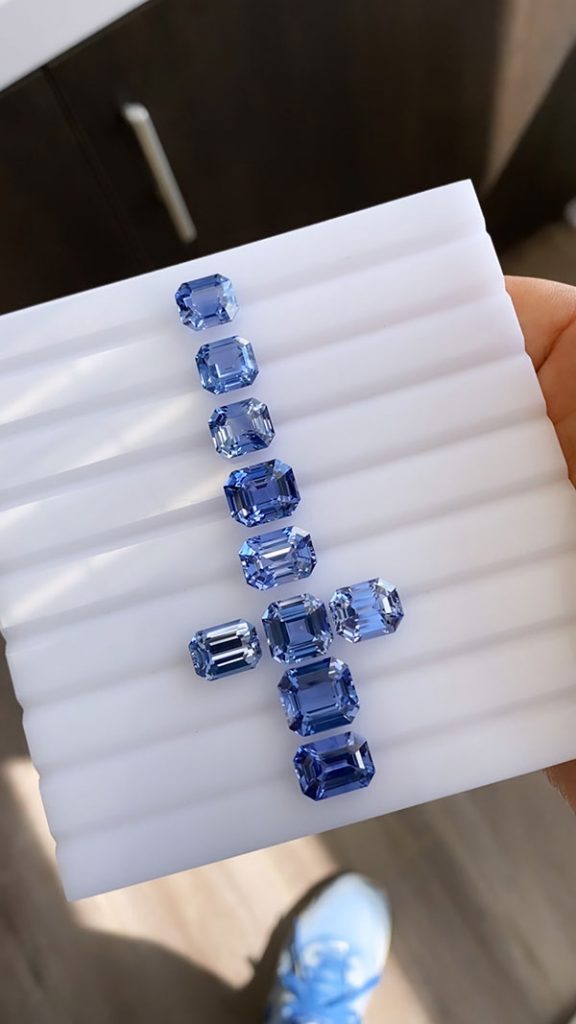
Everyone is still looking for these blue-green sapphires. They’re so ugly if you ask me, but people love them. Red to red-pink spinels are really having a moment—that has a lot to do with the fact that there aren’t a lot of fine ruby or pink sapphire available. These stones are filling a void, and people love them.
What are some unusual things you have in stock that seem to be resonating with people?
These really nice spinels. We’re really well merchandised in spinel right now. That’s a blessing for us, because there aren’t a lot of people who have a depth of supply. I would say paraiba tourmaline, but I don’t have any in stock anymore.
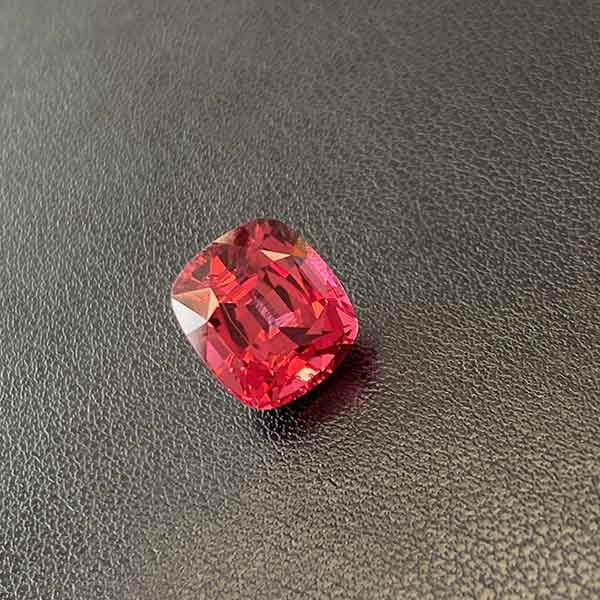
I wish I had more paraiba, both Brazilian and Mozambique, but both are equally difficult to come by now. They are the easiest stones in the marketplace to sell if you have something nice. And the prices have gone bonkers. Also really interesting for consumers are rare collector stones like demantoid garnets and Brazilian alexandrites.
Any travels on the horizon?
Tucson is our next big show. I’m hoping I can go to Asia in next the five to six months. I really miss it. I haven’t been to Asia in about two years. It’s funny, going to the East Coast now feels like going to Asia—it’s so exotic and so nice to get out of your environment.
What are your expectations for next year’s Tucson?
I think it’s going to be a really special show in 2022. We have yet to see what the situation is like for people overseas. Even if it’s just a domestic show, it will be hot. There will be a lot of people there. A lot will go who haven’t even been to Tucson before because people are just itching to travel.
And in this post-COVID environment, the market cap for gemstones has grown tremendously. We have taken a significant share of luxury jewelry in a post-COVID world because people with means are looking for unusual things. How many diamond studs can you buy? With color there are a million ways to reinvent a look.
How do you feel about the big push for traceability in the colored stone supply chain?
I can’t speak on behalf of other dealers. It’s not a new conversation for us. We’ve been implementing traceability protocols in our business for the last four to five years, to the best of our ability. I’m meeting more and more young designers who are highly sensitive to where the materials are coming from. Maybe the general ecosystem doesn’t care about this, but if you can’t have a thoughtful conversation with your end users about where your goods are from, you will be in a difficult position in four to five years.
The hottest topic right now in corporate circles is ESG [environmental, social, and governance]. You have the SEC and the FTC both getting involved. The SEC will require any companies trading to have a sustainability report, and the FTC has the Green Guides. They’re developing protocols for how you use the words sustainability and traceability. So these issues might not be very important to some dealers right now, but it’s the future. But what some people lose sight of is that a lack of transparency in our pipeline is what makes businesses profitable. To a certain degree, we won’t be able to implement all the protocols in our industry, but we have to start somewhere.
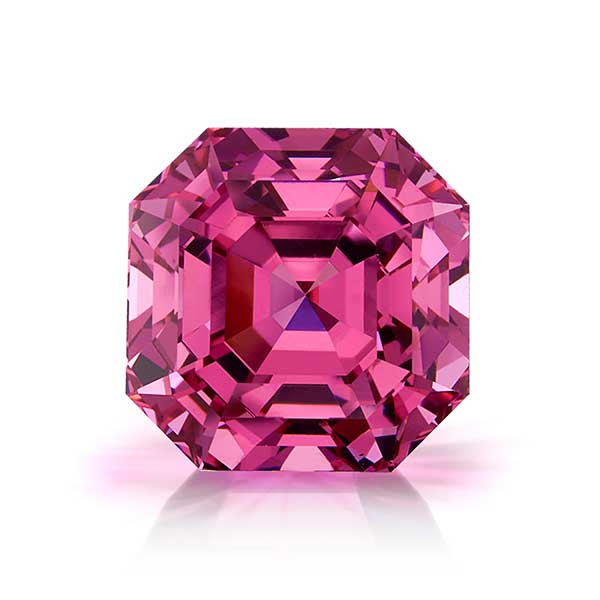
Are there any issues that keep you up at night or that you think might one day soon impact the gemstone community?
One thing that worries me is the propensity for cryptocurrency-related fraud. Cryptocurrency is here—I believe in it as a means of creating a smarter way to transact. But the lack of centralized governance over the crypto space, and the fact that there are so many types of cryptocurrencies and it’s so easy to get ripped off, that scares me.
Crypto-related fraud, whether it’s people using worthless currencies, or someone will tell you they’re going to send you X number of crypto, whether it’s Bitcoin or Ethereum, but they somehow send it to the wrong wallet or gain access to your wallet and wipe it clean. It’s a double-edged sword. The beauty of crypto technology is that once a transaction is done, it’s done. That’s also what’s scary about it. There are a lot more checks and balances in our archaic system.
Finally, what’s your take on the lab-grown category?
I’m not worried about synthetics. I think there’s an old guard in this industry primarily consisting of people, no matter what they sell, who have become very comfortable in what they sell and have become merchants—literally just selling paperwork at the end of the day. And as a result, they are afraid of change. I think the synthetic vehicle will be powerful for people who are selling natural gemstones. And it will create a lot more interest in this world of adornment.
Top: Dave Bindra with his father, Ruben, in the background (photo by Richa Goyal Sikri)
Follow JCK on Instagram: @jckmagazineFollow JCK on Twitter: @jckmagazine
Follow JCK on Facebook: @jckmagazine






